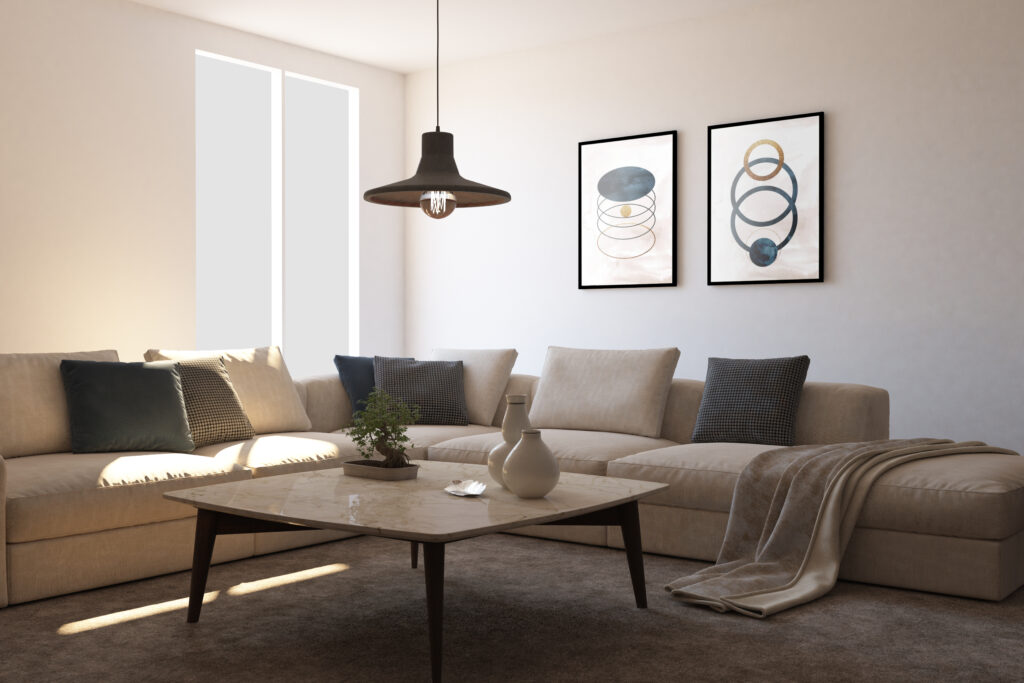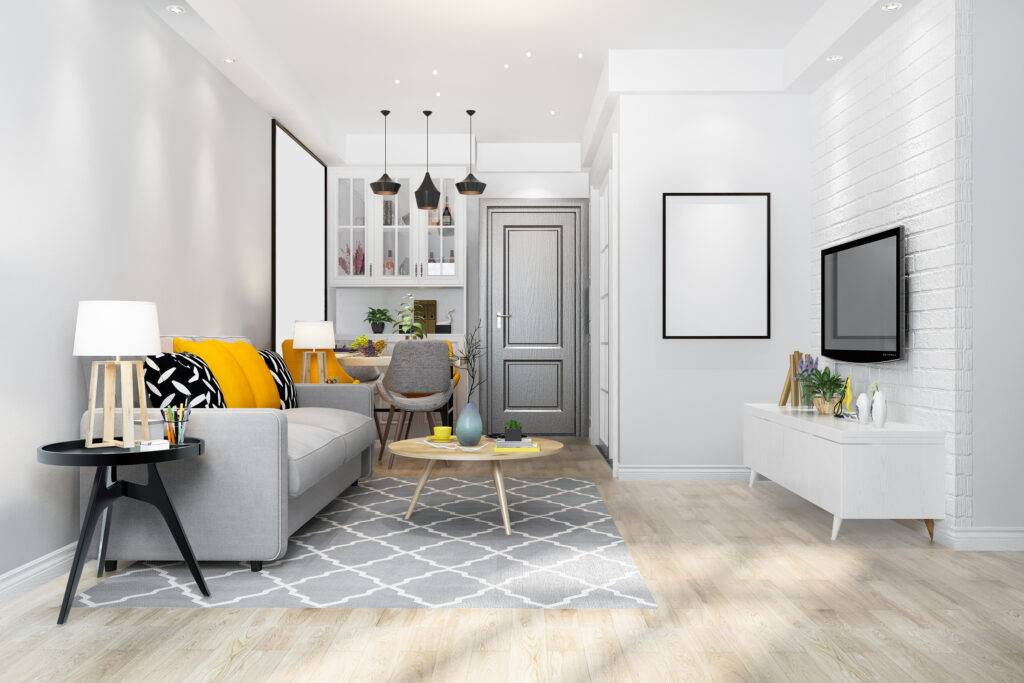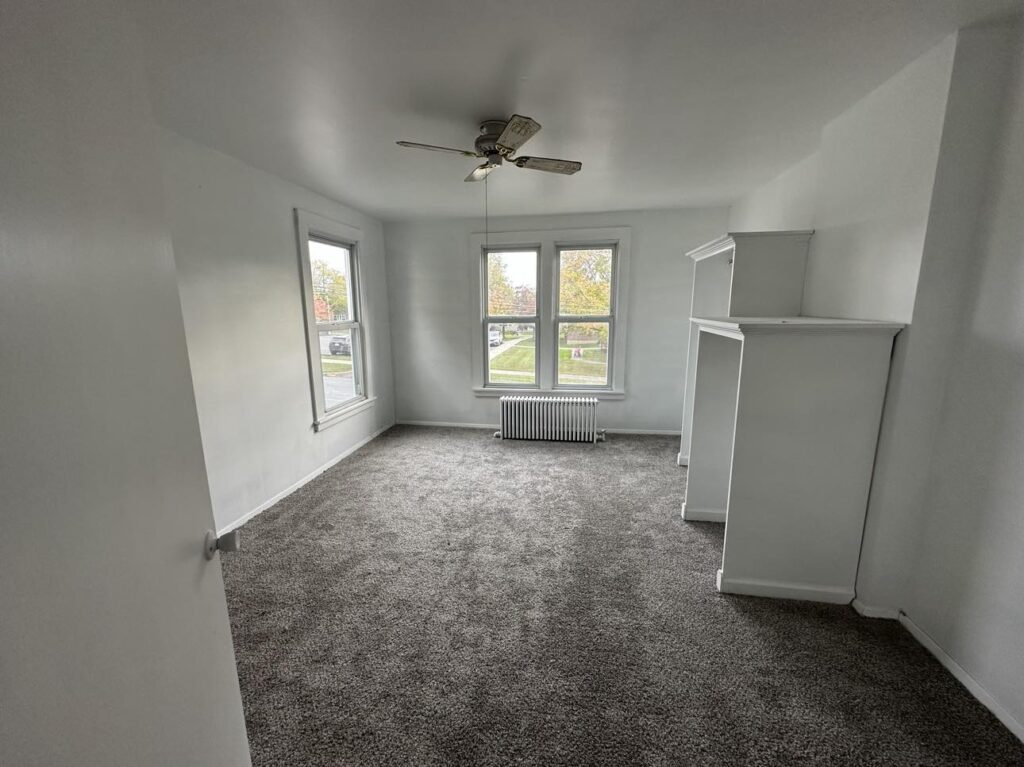Interior design plays a crucial role in transforming living spaces, making them not only visually appealing but also highly functional.
Whether you’re embarking on a home renovation or simply looking to refresh your living environment, thoughtful design choices can dramatically improve your quality of life and reflect your personal style.
This article explores how interior design can enhance your living space, focusing on functionality, aesthetics, and the creation of a cohesive, inviting atmosphere.

1. Understanding the Importance of Interior Design in Remodeling
Creating a Cohesive Look
One of the primary goals of interior design is to ensure that all elements of a remodel work harmoniously together.
A well-executed interior design project considers every aspect of the space, from color schemes and furniture placement to lighting and accessories.
By carefully considering each design element, interior designers create a cohesive look that flows seamlessly throughout the home.
Maximizing Functionality
Functionality is at the heart of successful interior design.
The layout and organization of a space significantly impact its usability and efficiency. Interior designers excel at optimizing space usage, creating multi-functional areas, and incorporating storage solutions that enhance daily living.
By carefully considering the needs and preferences of the occupants, designers can transform a space to better serve its intended purpose.
Reflecting Personal Style
Your home should be a reflection of your personality and taste. Interior design allows you to infuse your individual style into every aspect of your living space.
From selecting color palettes that resonate with your preferences to choosing furniture and decor that speak to your aesthetic, the design process is an opportunity to create a space that truly feels like home.
2. Color Schemes and Their Impact
Choosing the Right Palette
The color palette you choose for your space can have a profound impact on mood, perception, and overall ambiance.
Light colors can make small rooms feel more spacious, while bold colors can create striking focal points or add warmth to larger areas.
When selecting a color scheme, it’s essential to consider the size of the room, natural light availability, and the intended use of the space.
Color Theory Basics
Understanding color theory is crucial for creating a harmonious and visually pleasing interior. Complementary colors can create vibrant contrasts, while analogous color schemes offer a more subtle, cohesive look.
Neutral tones can serve as a versatile backdrop, allowing for easy updates with accent colors over time.
Trends vs. Timeless Choices
While it’s tempting to fully embrace current design trends, it’s wise to balance trendy elements with timeless choices.
This approach ensures that your space remains aesthetically pleasing and relevant for years to come.
Consider incorporating trend-inspired accents through easily changeable elements like throw pillows or artwork, while keeping larger investments like furniture and flooring in more classic styles.

3. Furniture Placement and Layout
Optimizing Space
Thoughtful furniture placement is key to enhancing the functionality of your living space. A well-designed layout improves flow and maximizes space utilization.
Consider traffic patterns and create clear pathways between different areas of the room.
In small apartments, multi-functional furniture pieces can help maximize limited space without sacrificing style or comfort.
Creating Functional Zones
Designating specific areas for different activities can greatly enhance the functionality of a room.
For example, creating a cozy reading nook in a living room or a dedicated workspace in a bedroom can add value and purpose to these spaces.
Use furniture arrangement, lighting, and area rugs to delineate these zones within larger rooms.
Proportion and Scale
Ensuring that furniture is in proportion with the room’s dimensions is crucial for a balanced look.
Oversized furniture can make a small room feel cramped, while pieces that are too small may look out of place in a larger space.
Pay attention to the scale of furniture pieces in relation to each other and the room itself to create a harmonious environment.
4. Lighting Design
Layered Lighting
A well-lit space combines ambient, task, and accent lighting to create a versatile and inviting atmosphere.
Ambient lighting provides overall illumination, task lighting focuses on specific activities, and accent lighting highlights architectural features or artwork.
This layered approach to lighting design allows for flexibility and enhances the overall ambiance of a room.
Choosing Fixtures
Lighting fixtures are not just functional elements; they’re also important design features that can complement the room’s style.
From sleek modern pendants to classic chandeliers, the right fixtures can serve as focal points and tie the room’s design together.
Consider both the aesthetic and practical aspects when selecting lighting fixtures for each space.
Natural vs. Artificial Light
Maximizing natural light can significantly enhance mood and reduce reliance on artificial sources.
Consider window treatments that allow for privacy while still letting in ample daylight.
For areas with limited natural light, strategically placed mirrors can help reflect and amplify available light, creating a brighter, more open feel.

5. Texture and Materials
Incorporating Different Textures
Adding a variety of textures to a space creates depth and visual interest.
Mix smooth surfaces with rougher textures through textiles, rugs, and wall treatments.
This layering of textures adds dimension to the room and creates a more inviting, tactile environment.
Material Choices
Selecting materials that are both aesthetically pleasing and durable is crucial for long-lasting design.
Consider the pros and cons of different options, such as hardwood versus laminate flooring, or natural stone versus engineered stone countertops.
High-quality materials not only look better but can also increase the value of your home and stand the test of time.
6. Accessorizing and Personal Touches
Adding Decorative Elements
Accessories are the finishing touches that bring personality and style to a space. Artwork, rugs, curtains, and decorative objects can transform a room from basic to extraordinary.
These elements allow you to easily update your space over time and reflect your changing tastes without major renovations.
Balancing Function and Style
While accessories should be visually appealing, they should also serve practical purposes where possible.
For example, decorative baskets can provide additional storage, while a beautiful throw blanket adds both style and comfort to a living room.
7. Trends and Innovations in Interior Design
Current Trends
Staying informed about current design trends can inspire fresh ideas for your space.
Popular trends like biophilic design, which incorporates natural elements into interiors, or the continued popularity of Scandinavian design, with its focus on simplicity and functionality, can offer new perspectives on enhancing your living space.
Innovative Solutions
Advancements in technology have led to exciting innovations in interior design.
Smart home integrations, energy-efficient lighting systems, and new materials that combine aesthetics with sustainability are just a few examples of how modern design is evolving to meet contemporary needs.
8. Working with a Professional Interior Designer
Benefits of Professional Guidance
While many homeowners enjoy DIY projects, working with a professional interior designer can bring expertise that saves time and avoids costly mistakes.
Interior designers have access to resources and knowledge that can elevate your project, ensuring that every aspect of the design is carefully considered and executed.

Choosing the Right Designer
Finding a designer whose style and approach align with your vision is crucial for a successful collaboration.
Look for professionals with a portfolio that resonates with your taste and needs.
A good designer will work closely with you throughout the design process, taking into account your preferences, budget, and lifestyle to create a space that truly enhances your daily life.
Conclusion
Interior design is both an art and a science, combining creativity with practical problem-solving to enhance the functionality and aesthetics of living spaces.
By carefully considering elements such as color, lighting, furniture placement, and material choices, you can create a home that not only looks beautiful but also supports and improves your quality of life.
If you want professionals to help you enhance your interior space Contact us today for a free consultation.
